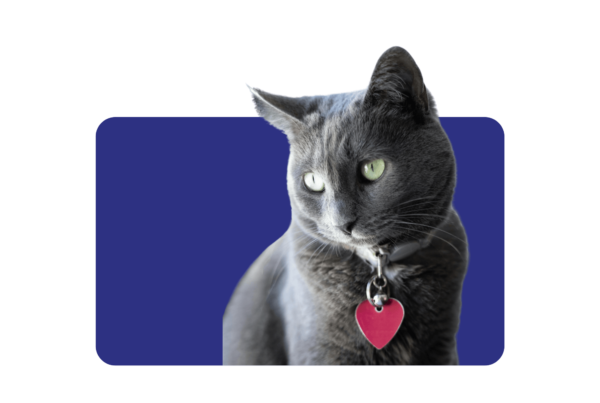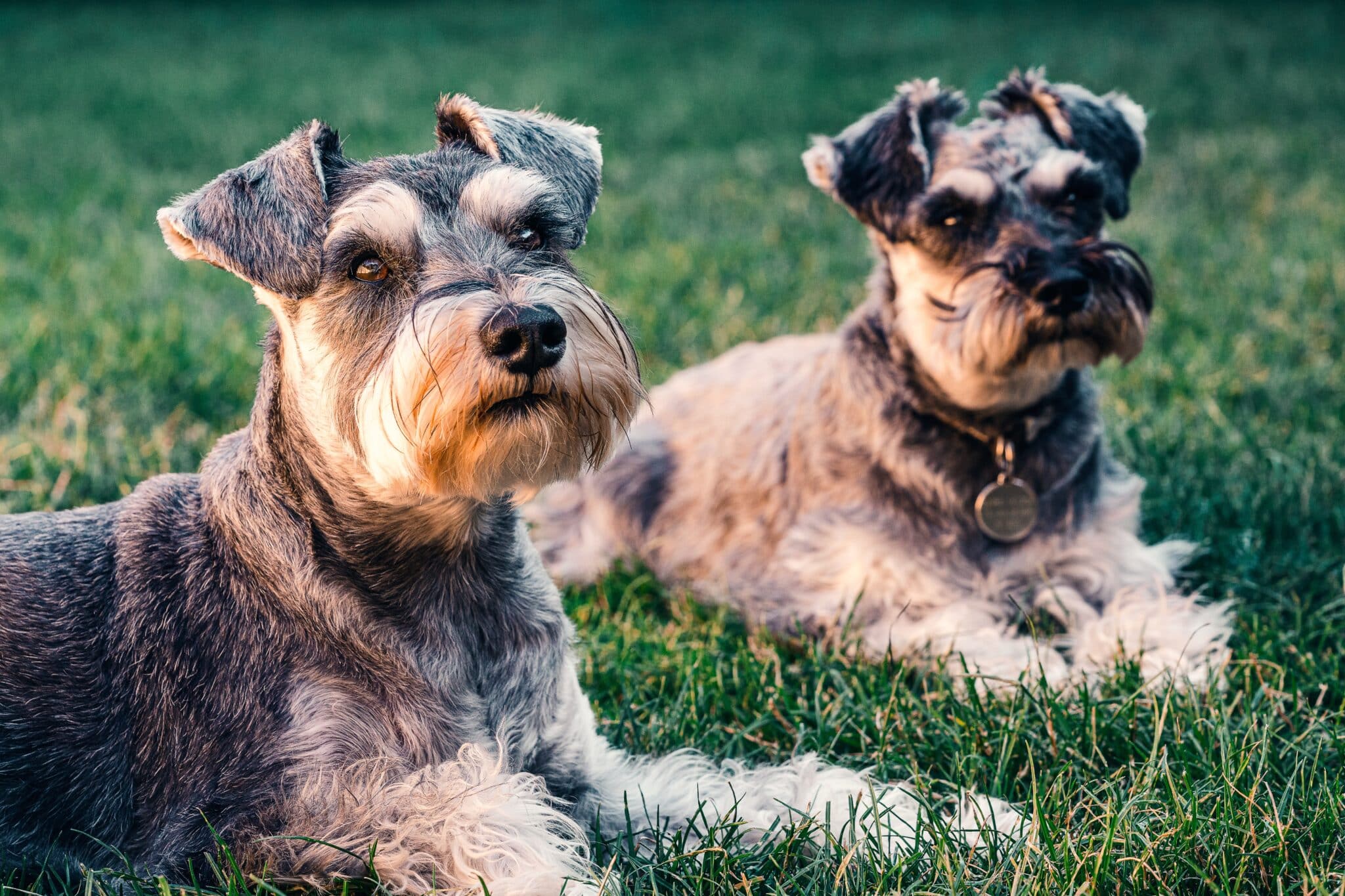Flat-faced pets need special attention throughout their lives. Whether we’re talking Persian cats, Boston Terriers or the currently hugely popular French bulldogs, their short-nosed faces and pop-out eyes – the very attributes that make them so attractive to pet owners – bring unique health challenges.

Known as brachycephalics, flat-faced or short-nosed dogs, including Boxers, English and French bulldogs, Pugs and Pekingese can suffer from breathing problems caused by their short, partially-obstructed airways. These breathing issues can worsen over time if not treated timeously.
Flat-faced Frenchies aren’t the only brachycephalics
Brachycephalic means ‘shortened head’ and it also refers to dogs like Shih Tzus, Chihuahuas, Chow Chows, Lhasa Apsos, Bull Mastiffs, Cavalier King Charles and English Toy Spaniels. Because the flat face is so popular (let’s be honest – who can resist those big eyes?), these dogs have been bred for their looks, but many suffer from airway issues as a result. The flat face is the result of a shorter or smaller jaw and nose, yet the tissues inside are still the same as their non-flat faced counterparts. Because the tissue is squashed into a smaller space, the airways are narrowed. All airway issues that may result from this ‘overcrowding’ are collectively referred to as brachycephalic obstructive airway syndrome or BOAS.

Flat-faced symptoms to watch out for
All flat-faced dogs suffer from some form of mild brachycephalic airway syndrome and are also vulnerable to more dangerous conditions that may require surgery. Symptoms of airway obstruction include snoring, snorting, noisy breathing, and tiring or fainting during exercise. Because these conditions become worse over time, and can cause permanent damage, it’s important to monitor your pet closely and work with your vet to determine if and when surgery may be needed. The rule of thumb is that if you can hear your dog breathe, there is a problem.
The following are brachycephalic airway syndrome components that can cause serious health concerns.
• Elongated soft palate Almost every brachycephalic dog has an extra-long soft palate (tissue between mouth and nose cavities) which extends into the throat more than it should. In many dogs, this may only cause snoring and some difficulties panting in hot weather, but other dogs may need surgery to shorten the palate.
• Stenotic nares Another common problem is narrowed or collapsed nostrils, which make it hard for dogs to breathe through their noses. This usually leads to a lot of mouth breathing and makes exercise difficult. Consider what it feels like to breathe through a straw the whole time. A simple surgical procedure is used to open up the nostrils.

Dr Morné opened this dog’s nostril surgically to allow easier breathing.
• Hypoplastic trachea In some dogs the trachea, or windpipe, is very narrow. This narrowing makes panting difficult, and can make dogs more susceptible to tracheal infections. They’re at a higher risk of choking.
• Everted laryngeal saccules The increase in breathing effort causes the saccules (pouches) in the layrnx to flip inside out (hence the term ‘everted’). This adds to the obstruction of the airway, so surgical removal of the saccules is common.

Flat-faced pets: life-threatening risks
The presence of all or some of these components can have a drastic effect on a flat-faced pet’s wellbeing. They will be at risk of developing the following life-threatening conditions:
• Heat stroke Since dogs use panting to cool down, brachycephalic dogs struggle in hot weather because they cannot draw in enough air to cool their body. Walking or exercising in the heat of the day can often result in heat stroke. Some brachycephalics can develop heat stroke spontaneously. Vomiting, glazed eyes, sudden collapse and seizures can all be signs of heat stroke.
• Laryngeal collapse Over time, the supports of the larynx (or voice box) that keep it open become weaker and weaker due to the constant increase in breathing effort. This causes further narrowing of the larynx, which worsens the problem. At some point the laryngeal supports give way, and the larynx collapses. This usually results on complete blockage of the windpipe, causing dogs to suffocate – often before they can get to a vet. The best way to prevent this is to address the BOAS before it gets to this point.
• General tiredness and weakness Due to the effort of breathing, interrupted sleep patterns and prolonged low oxygen levels, dogs may often show more tiredness, often lacking energy to play. Many owners are surprised at the difference seen before and after surgery, often reporting increased energy levels and more willingness to move around.

What other problems do brachycephalic dogs have?
- Eyes and Eyelids Brachycephalic dogs’ eyes tend to stick out of their skull a little more than others. Sometimes it’s difficult for eyelids to close over their eyes (even while sleeping) which can cause them to dry out, developing a condition called dry eye. They are more vulnerable to their eyes popping out of their sockets if hit on the head, and they are prone to developing discolouration of the eye that can lead to vision problems. This is due to the hair on the nose often touching the eye, causing constant irritation.
• Teeth Brachycephalic dogs have the same number of teeth as other dogs, but less space to fit them all in, which can lead to periodontal disease. Their teeth can often be rotated 90 degrees to normal. Dpecial care is needed to keep them clean.
How can you protect your flat-faced dog?
If you have a flat-faced or brachycephalic dog, there are some precautions you can take to reduce the risk of airway or other health problems:

• Use a harness instead of a collar leash Collars can pull on the larynx and trachea, making breathing more difficult, and also put strain on the face and eyes.
• Don’t let your dog over-exercise or overheat Even brachycephalics who do not need surgery will struggle with breathing if they are exercising or out in hot and humid weather. Keep your dog inside during high temperatures and limit their exercise during this time. General recommendations are to allow gentle exercise before 10 am and after 5 pm during hot weather.
• Keep weight in a healthy range Obesity makes breathing much more difficult, making brachycephalic problems worse.
• Keep track of normal snorting and snoring Snoring and snorting should not be considered normal at first – so have it checked out initially. Then, in consultation you’re your vet, you’ll learn what sounds are normal for your dog, so when you hear new snorting or laboured breathing, it’s time to check with the vet. Many of these conditions worsen over time.
• Work with your vet to determine which, if any, conditions may require surgery Not all dogs will need surgery but many will benefit from a palate shortening or other corrective procedure. In some cases, surgery is the only way to treat severe problems, and this is best done early in life.
• Spay or neuter your dog Since brachycephalic airway syndrome is inherited, it is best to avoid breeding a brachycephalic dog which had to undergo surgery (so that their puppies won’t have the same severe problems). Giving birth is also very hard on female brachycephalic dogs often requiring c-sections, so it is best left to professional breeders.
Brachycephaly in cats
This is a trait of skull bones shortened in length, giving the face and nose of a cat a ‘pushed in’ appearance. Due to shorter bones of the face and nose, the anatomy of the face is altered. This can potentially cause various physical problems, such as brachycephalic airway syndrome. Typical brachycephalic cat breeds are Persian, Himalayan and Burmese cats.

The health difficulties a brachycephalic cat may experience are directly dependent on the extent of their brachycephaly. The shorter their skull is, the more difficulties the cat may encounter. This is because, although their skull is shorter, it still needs to fit in all the tissue as a cat with a normal-sized skull. This can lead to health complications such as difficulty breathing, dental issues and eye problems. It is also possible for cats to suffer from digestive problems, sleep disorders and temperature control issues. They are much more susceptible to upper respiratory infections, often requiring long term management. Surgical options also exist, mainly aimed at widening the nostrils. Even a small change can have a dramatic difference on the cat’s wellbeing.
Owner perceptions of brachycephalic breeds
Unfortunately a recent scientific study showed that owners of brachychephalic pets likely do not understand or appreciate the seriousness of their dog breed’s conformational problems and necessary surgeries.
“The contrasting and paradoxical results (of the study) support the influence here of the ‘normalisation’ phenomenon,” explain the researchers, “whereby owners of brachycephalic dogs may be consciously aware that the dog is struggling to breathe but not consciously accept that this is a specific problem, instead considering it a ‘normal’ and therefore somehow acceptable feature of the breed.”
The owners seemed even less aware of their dogs’ potential sleeping problems. “Sleeping with a toy in their mouth or in a sitting position (strategies to avoid upper airway obstruction) may be considered as just cute quirks of their dog rather than indicators of true pathology.”
Owners of these breeds may also have preconceived notions that these dogs have low exercise requirements, when the reality is that they have medical issues that make it harder to exercise. “These breeds should not be marketed as having low exercise requirement as an inherent, and often appealing, breed attribute,” write the researchers. “Encouraging safe levels of exercise in brachycephalic dogs is important to promote fitness levels and avoid obesity, a risk factor for brachycephalic airway syndrome.

Flat-faced pets can be costly to treat
Brachycephalics will cost more to treat
Before adopting a brachycephalic breed, it is worth discussing with your vet the long-term financial implications. These dogs and cats carry a high risk of necessary surgical intervention and specialised management that is required to give them the best life possible.





